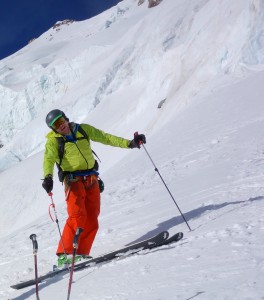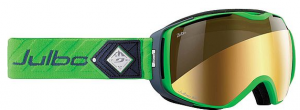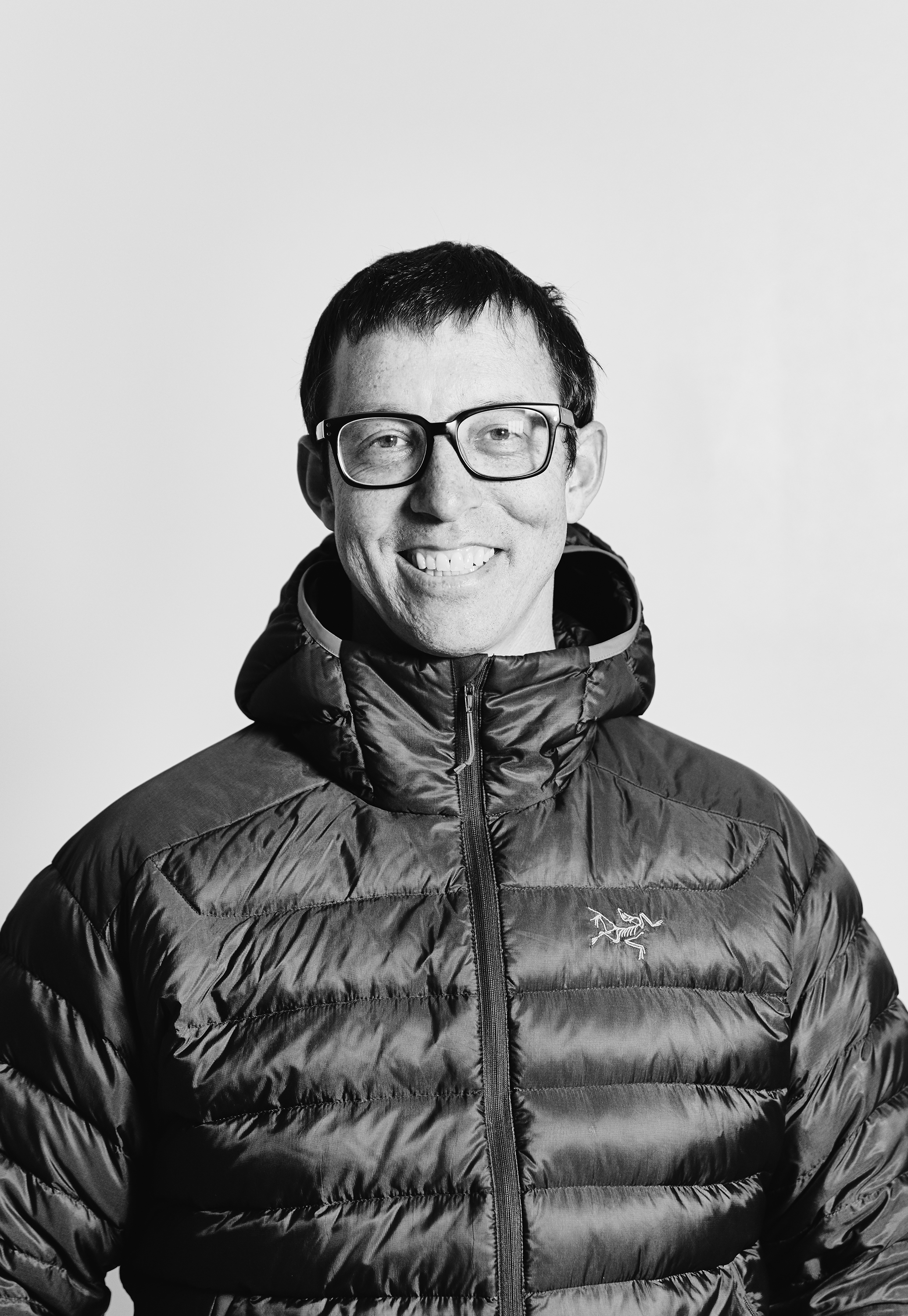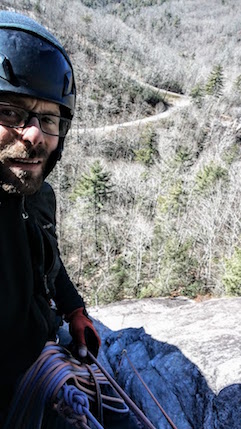Julbo Universe Zebra Goggle review
AMGA tester team member, Dylan Taylor, tests the Julbo Universe Zebra Google
For what types of guiding activities and terrain would you use and have you used this product?
I wore the Julbo “Universe Zebra” goggles on a number of ski touring days in British Colombia, Colorado, and in the French Alps this spring. I wore them in fog, storms, and sunshine. The Zebra lenses are photo-chromatic, and adjust light transmission as a function of overall brightness.
 What makes this product ideal (or not) for guiding?
What makes this product ideal (or not) for guiding?
Over the course of a winter, I probably wear goggles about 90% of the time. The sunglasses come out later in the spring, when days are longer, brighter, and involve more uphill toil. Every ski guide knows that one of the most unsavory aspects of the job is skiing out in front of your clients – on a stormy or foggy low-vis day. We’re always afraid of skiing off of a cliff, into a crevasse, or most likely, into a rut or large lump of crappy snow. Good vision is critical. I’m a big fan of old-school amber or yellow lenses for maximum contrast on bad-vis days. But the unfortunate compromise of these lenses is that they let tons of light in when the clouds part and the sun comes out. Enter the Zebra lens: It darkens in intense sunlight, and becomes lighter under thick cloud. The tint of these Julbo goggles is a bit of an amber/brown. It provides nearly as much flat-light contrast as my old Smith Cascades ($20 bucks from Sports Authority), but with the ability to darken significantly, and with some fashion to boot.
How does the gear hold up in guiding vs. recreational situations?
Goggles need to perform well for guides as well as for any other type of skier. We all place a high priority on quality of vision, even in poor light. Guides spend more time in the field than most of the 9-to-5 folks who hire us, thus we really can’t compromise with our eyewear. These goggles would make most any customer happy, and I think they’d satisfy most guides as well.
Please describe the design and performance of this product, including (but not limited to):
The Julbo Universe is meant to fit over a normal to large face. They are a bit oversized, which is “all the rage” these days. The large size and shape of the spherical lenses helps maximize peripheral vision. These goggles look OK on a head with no helmet, but they look great when nestled under the brim of most any modern ski helmet. The Luna is the women’s model, a slightly smaller fitting frame which appears to share most characteristics of the Universe
If relevant, please describe the functionality of this product, including (but not limited to):
The goggles nest compactly into the included chamois soft case, and/or the protected goggle pocket in the top of your ski touring pack. In a month or so of use, I managed to avoid scratching the heck out of the front of the lenses. They do a great job of not fogging up, which means you hardly ever have to touch the inside of the lenses – this factor alone can help add weeks or months of life to an intensly used pair of goggles. And if you do wear out, scratch, or break the lenses, they are much easier to replace than the lenses in the Smith IO/X model.
What’s the bottom line? Did you love it? Hate it? Luke warm?
I have used a lot of Smith goggles in the last few years. While I like Smith, I think these Julbos may have won me over.
 Do you have any anecdotes you can share, from your time testing, that call out any of this product’s unique features, both pros and cons?
Do you have any anecdotes you can share, from your time testing, that call out any of this product’s unique features, both pros and cons?
Two weeks ago I skied the Marinelli Couloir on the South (Italian) face of the 4550m Monte Rosa. The couloir is almost 3000m top to bottom – one of the longest ski runs anywhere. I wore the goggles from the couloir’s entrance until 2/3 of the way down. By this time the spring sun was cooking us, sweat dripped down my face, through my clothes, and into my ski boots. I stripped layers and switched back to sunglasses. I was pleased that, despite my near-heat exhaustion, the inside of the goggles were not steaming up. I would have expected this from most goggles I’ve tried. I was pleasantly surprised, as good anti-fog characteristics are a great attribute for a pair of goggles.












